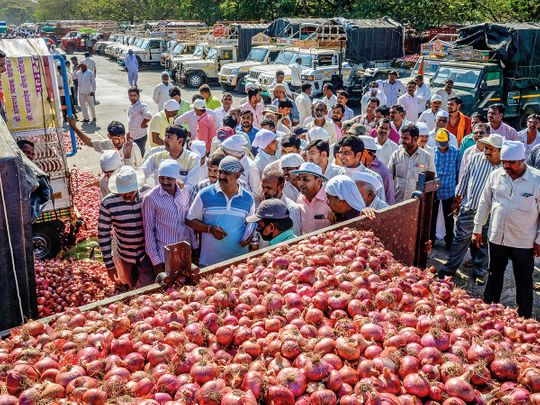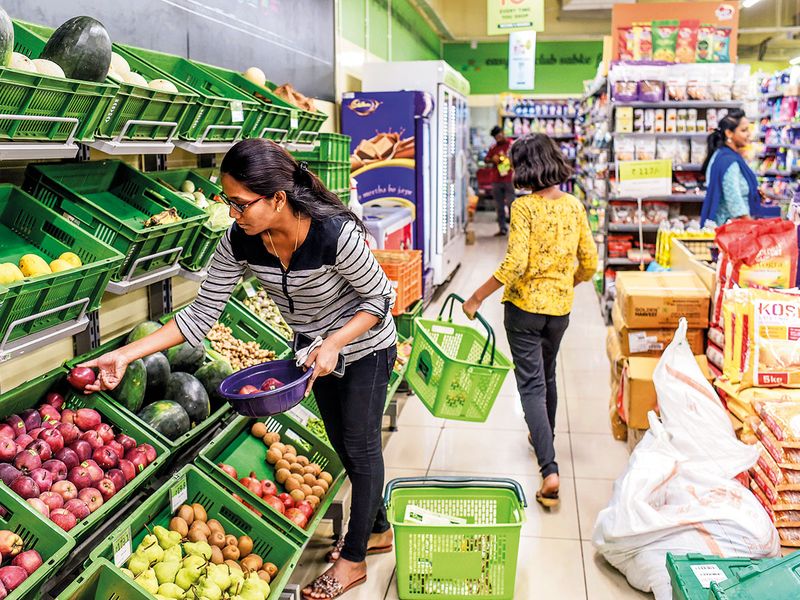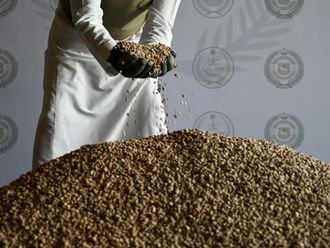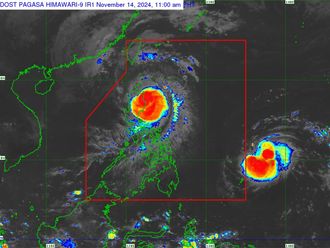
Nashik, India: Fed up with unfulfilled government promises to improve their lives, 35,000 farmers came in from their fields around the city of Nashik in 2018 and marched 160 kilometres to Mumbai to demand help.
State leaders from Prime Minister Narendra Modi’s party quickly promised to address their concerns — guaranteeing better crop prices, waiving farm loans and improving other assistance — and then quickly sent them home. But for many, things only got worse.
Now, as India holds the world’s biggest election and Modi’s Bharatiya Janata Party seeks another five years in power, hundreds of millions of farmers will have the chance to express their frustration at the ballot box.
They are a big and suffering constituency: More than half of India’s 1.3 billion people still depend in some way on farming, even though agriculture accounts for only 17 per cent of the economy. The country has struggled to create new jobs in manufacturing and services to make rural families less dependent on the land.
Government policies under Modi and the BJP have complicated matters. Worried about the bouts of double-digit food inflation that hurt the previous government, the BJP has focused on maintaining low consumer prices by encouraging production, curbing exports and promoting imports.

After several years of drought that had left many growers with big losses, the supply of crops such as onions and legumes exploded in 2018, sending prices plunging. That was a godsend for many poor Indians. But farmers suffered, and the government largely reneged on promises to buy their crops at prices high enough to ensure a profit.
“In the name of the poor, you have robbed the farmer,” said Ashok Gulati, a prominent Indian agricultural economist who has occasionally advised the current government. Now, BJP candidates “are facing the music,” he said.
With voting underway across India, both the BJP and its main rival, the Indian National Congress, are urgently courting farmers. Modi has reiterated his 2016 promise to double farmers’ incomes by 2022, while his Congress rival, Rahul Gandhi, has pledged a nationwide loan waiver and more nonfarm work for people living in rural areas.
Tukaram Namdeo Gaikwad, one of the farmers from Nashik who marched to Mumbai last year, was unimpressed.
“They talk about the farmers’ welfare, but they don’t do anything,” he said during a rally for Jiva Pandu Gavit, the lone Communist in the Maharashtra state legislature. Gaikwad said he would vote for Gavit, who helped lead the 2018 march and is now trying to wrest a seat in Parliament from the BJP.
A spokesman for the state of Maharashtra in Mumbai said that the government had made progress on farmers’ demands, including granting titles to farm public land to 43,600 people, purchasing legumes and soybeans from nearly 93,000 growers, and approving new irrigation projects.
As proof of his commitment to the rural poor, Modi has also pointed during his campaign to his national programmes to bring electricity, toilets and health care to everyone.
But Modi has also acknowledged his government’s failures to meet farmers’ expectations. Campaigning in Uttar Pradesh in March, he admitted that the government owed sugar-cane growers in the state more than $1.4 billion (Dh5.1 billion) in unpaid price guarantees and vowed to make it right.
Meanwhile, many farm families are struggling with debt. One banker in Nashik estimated that nearly half of the farm loans outstanding were not being repaid.
The state’s loan waiver programme provides little relief to the neediest farmers since it forgives just a sliver of their total debts.

In desperate times, some farmers have turned to suicide, troubling local officials. In Nashik district, where the main crop is onions, 108 farmers killed themselves in 2018, up sharply from 2014, officials said. The deaths have continued this year.
Economists say the best way to provide immediate farm relief would be for the government to eliminate its maze of agricultural subsidies and instead provide direct cash support to rural families.
Longer term, they argue, tens of millions of people must move off the land and into manufacturing and service jobs — the model followed by China, Southeast Asia and much of Latin America to modernise their economies.
“You have to create more jobs outside agriculture,” said Pramod Joshi, director for South Asia at the International Food Policy Research Institute in New Delhi.
During his last campaign, Modi promised to add 10 million jobs. The economy has most likely fallen short of that target, although by how much is unknown, since the government has blocked the release of official employment data, claiming that it is unreliable.
Manish Rawal, director of V.M. Auto Parts in Nashik and a leader of the local industry trade group, said that the number of jobs in the urban area, which has about 1.5 million residents, had fallen since early 2018.
He has seen the decline first-hand in orders for the vehicle transmission parts he provides to tractor and truck makers. “Commercial vehicle sales are declining,” Rawal said.
Nashik’s major industries have long included global drugmakers like GlaxoSmithKline and electrical equipment makers like Siemens. But in recent years, development stagnated, and efforts to lure defence and technology companies have brought only slow progress, Rawal said.












